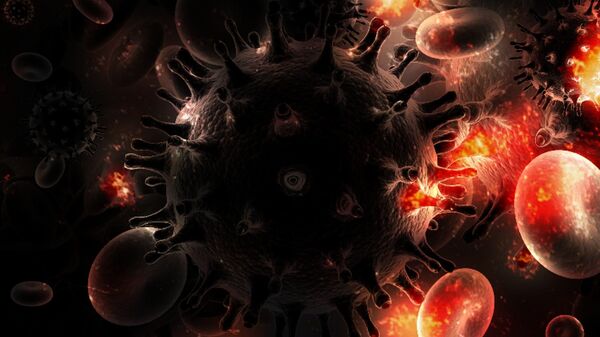Published in medical journal The Lancet, the study monitored nearly 1,000 male same-sex couples from 75 clinical sites across 14 European countries who were identified as serodifferent couples, meaning one individual was HIV-positive and on antiretroviral drugs, while the other was HIV-negative.
Over the course of the study's eight years, researchers found that no new cases emerged of the virus being transmitted from the HIV-positive partner on ART drugs to the HIV-negative partner during sex without a condom. However, officials later determined through DNA testing that 15 of the initially HIV-negative participants did test positive for the virus, but that they'd contracted it from a third party who was not on ART.
The findings build on an earlier phase of the study which specifically looked at the HIV transmission risk for serodifferent heterosexual couples. That study also found that the risk of the virus being passed on was zero.
"Our findings provide conclusive evidence that the risk of HIV transmission through anal sex when HIV viral load is suppressed is effectively zero," researchers concluded. "Our results give equivalence of evidence for gay men as for heterosexual couples and indicate that the risk of HIV transmission when HIV viral load is suppressed is effectively zero for both anal and vaginal sex."
Alison Rogers, the co-author of the study, said in a statement that the results are a "powerful message [that] can help end the HIV pandemic by preventing HIV transmission, and tackling the stigma and discrimination that many people with HIV face."
"Increased efforts must now focus on wider dissemination of this powerful message and ensuring that all HIV-positive people have access to testing, effective treatment, adherence support and linkage to care," she added.
Researchers did note that a drawback of the study was that most of the couples had already been having sex without condoms for more than six months before the start of observations. They also indicated that the average age of HIV-negative participants was 38, explaining that most HIV transmissions occur in people younger than 25 years of age.
Michel Sidibé, executive director of of the Joint United Nations Programme on HIV and AIDS (UNAIDS), hailed the study's conclusions. "This is excellent news. People living with HIV now have confirmation that provided they take treatment regularly and are virally suppressed, they are not infectious… This gives a strong, positive message that will help to reduce the stigma around HIV and improve the self-esteem and self-confidence of people living with HIV," he said in a statement.
According to UNAIDS, there were approximately 36.9 million people worldwide living with HIV/AIDS in 2017, and children younger than 15 years of age made up 1.8 million of those cases. Just 21.7 million of those living with HIV globally had access to antiretroviral therapy.
Per 2017 figures, more than 80 percent of HIV-positive individuals lived in Africa, with the remaining ones scattered throughout parts of Asia, Europe and North America. "The vast majority of people living with HIV are in low- and middle-income countries," UNAIDS says.
Since the start of the acquired immune deficiency syndrome (AIDS) epidemic in the late 1980s, more than 77 million people have become infected with HIV. Of those cases, more than 35 million died from AIDS-related illnesses. HIV is the virus that causes AIDS.



